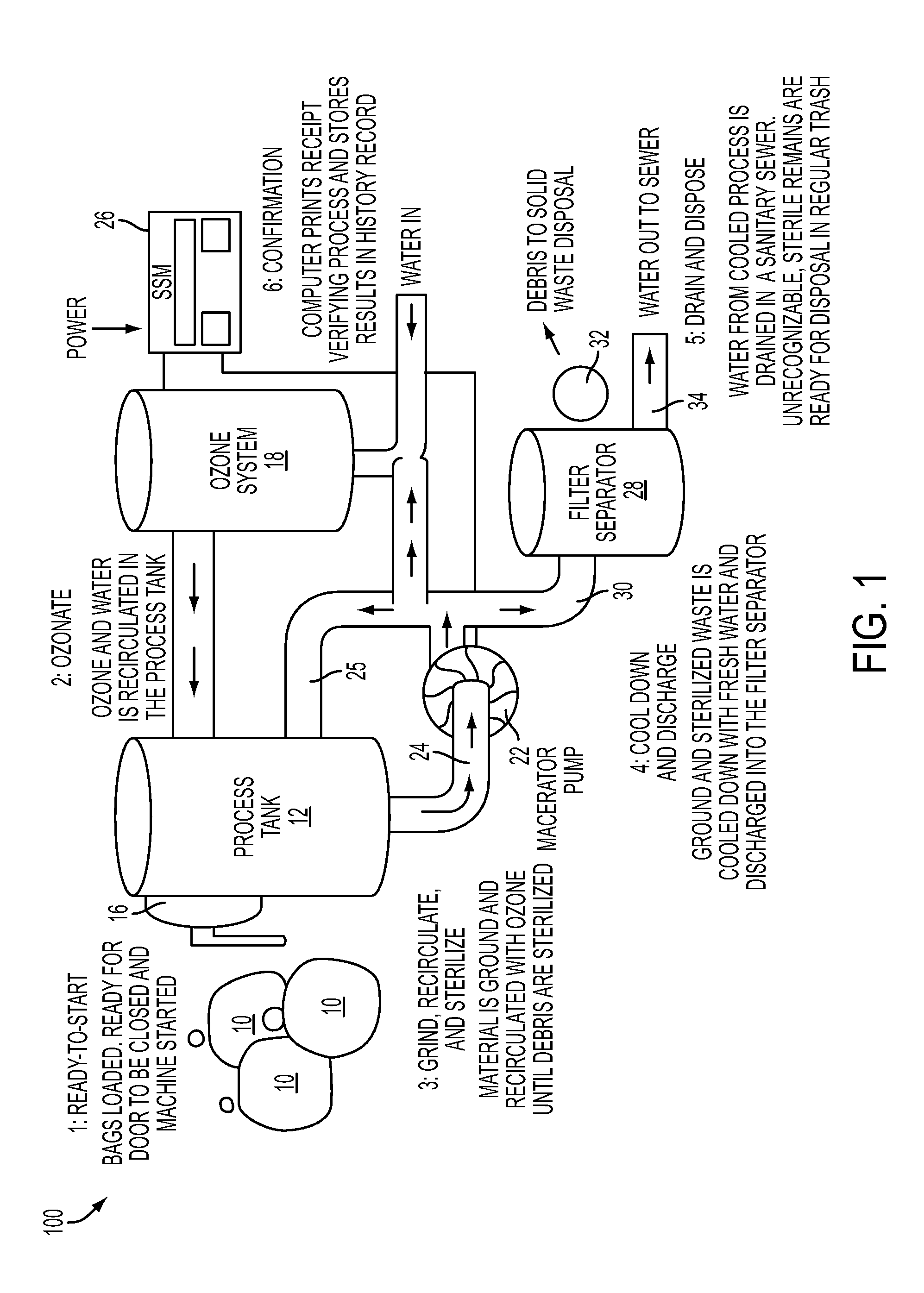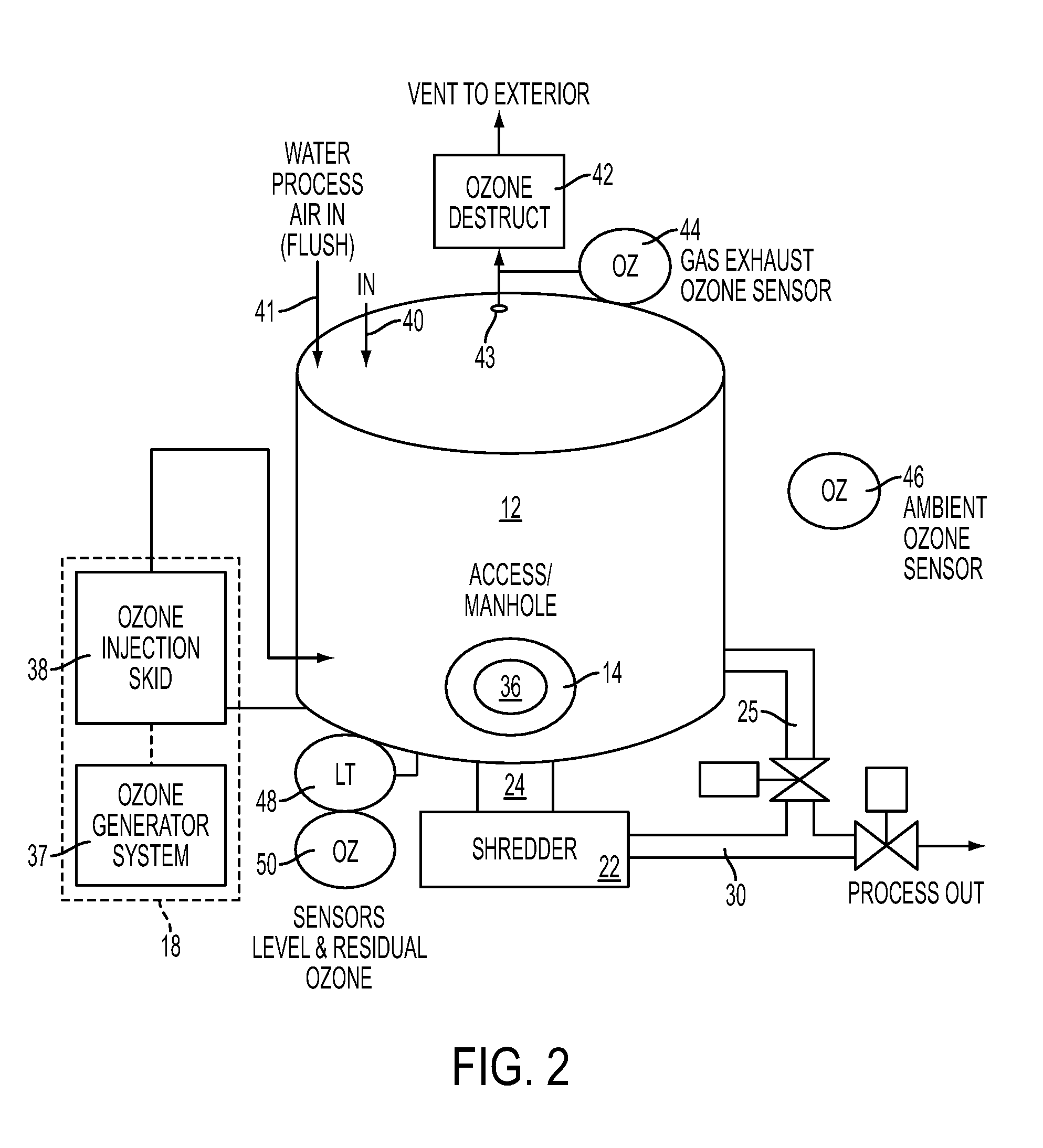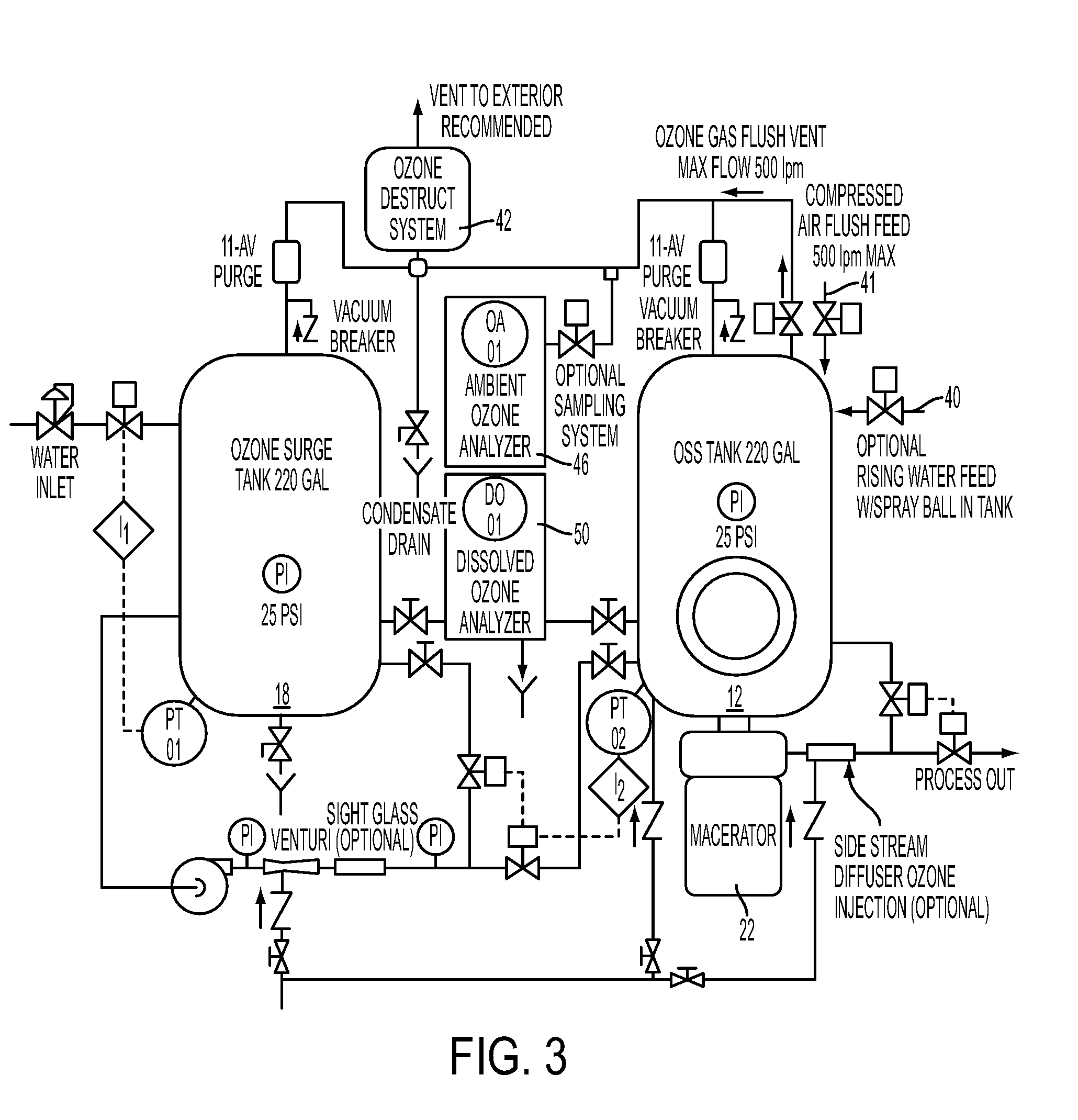System and method for processing waste material
a waste processing system and waste material technology, applied in the field of waste processing systems and methods, can solve the problems of significant societal and environmental disadvantages and regulatory restrictions, incineration is objectionable, waste disposal in the ocean is objectionable, etc., and achieve the effect of reducing waste production and energy requirements for the waste processing system and reducing waste volum
- Summary
- Abstract
- Description
- Claims
- Application Information
AI Technical Summary
Benefits of technology
Problems solved by technology
Method used
Image
Examples
Embodiment Construction
[0035]The various embodiments of the invention are discussed in detail below. While specific embodiments are discussed, it should be understood that this is done for illustration purposes only. In describing and illustrating the embodiments, specific terminology is employed for the sake of clarity. The embodiments so disclosed, however, are not intended to be limited to the specific terminology selected. Persons of ordinary skill in the relevant and related art will recognize that other components and configurations may be used without departing from the true spirit and scope of the embodiments. It is to be understood that each specific element includes all technical equivalents that operate in a similar manner to accomplish a similar purpose. Therefore, the examples and embodiments described herein are non-limiting examples.
[0036]Generally, the term “disinfection” and its variants pertains to the destruction of pathogenic microorganisms or their toxins or vectors. The term “sterili...
PUM
| Property | Measurement | Unit |
|---|---|---|
| temperature | aaaaa | aaaaa |
| half life | aaaaa | aaaaa |
| half life | aaaaa | aaaaa |
Abstract
Description
Claims
Application Information
 Login to View More
Login to View More - R&D
- Intellectual Property
- Life Sciences
- Materials
- Tech Scout
- Unparalleled Data Quality
- Higher Quality Content
- 60% Fewer Hallucinations
Browse by: Latest US Patents, China's latest patents, Technical Efficacy Thesaurus, Application Domain, Technology Topic, Popular Technical Reports.
© 2025 PatSnap. All rights reserved.Legal|Privacy policy|Modern Slavery Act Transparency Statement|Sitemap|About US| Contact US: help@patsnap.com



